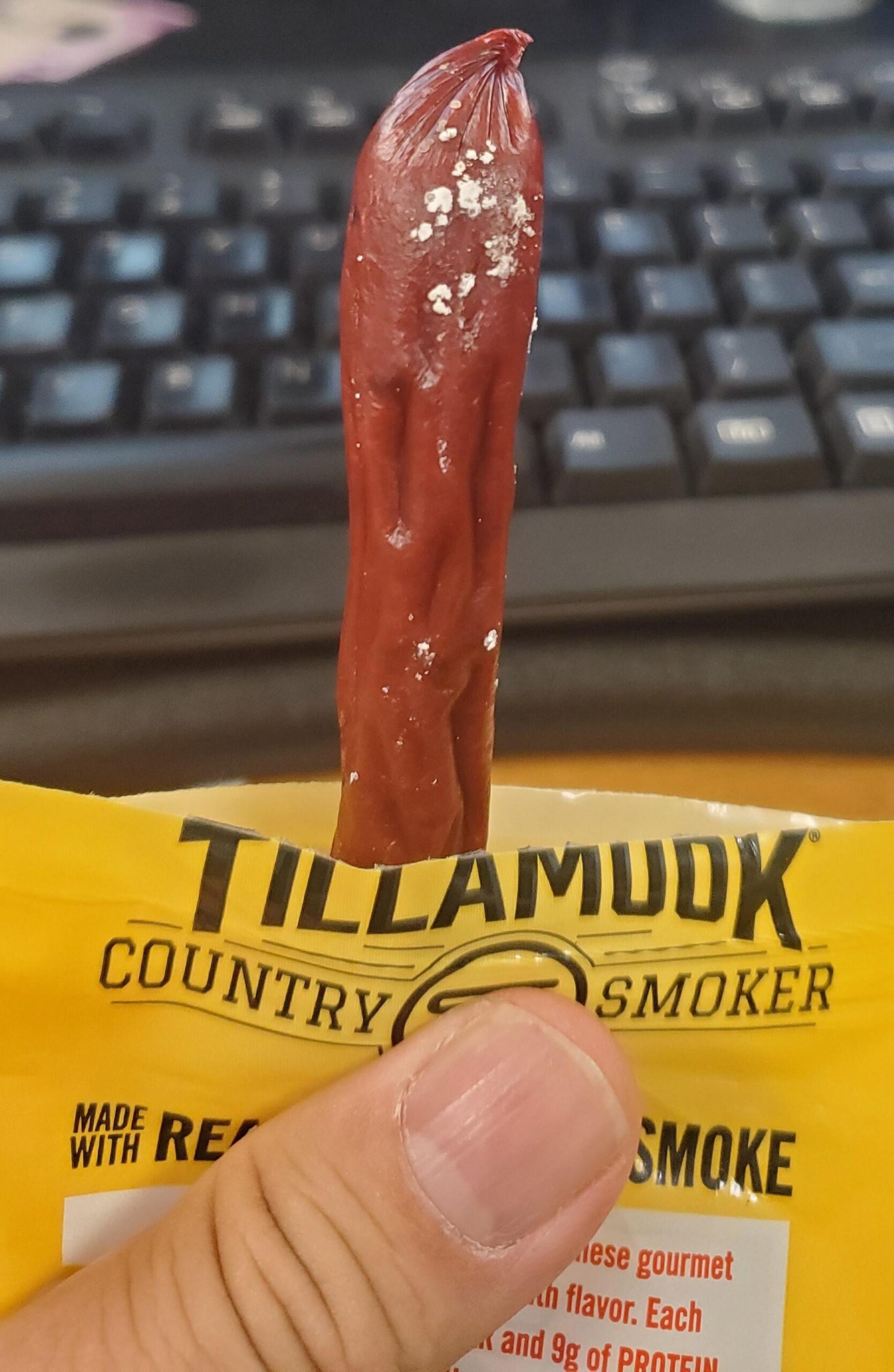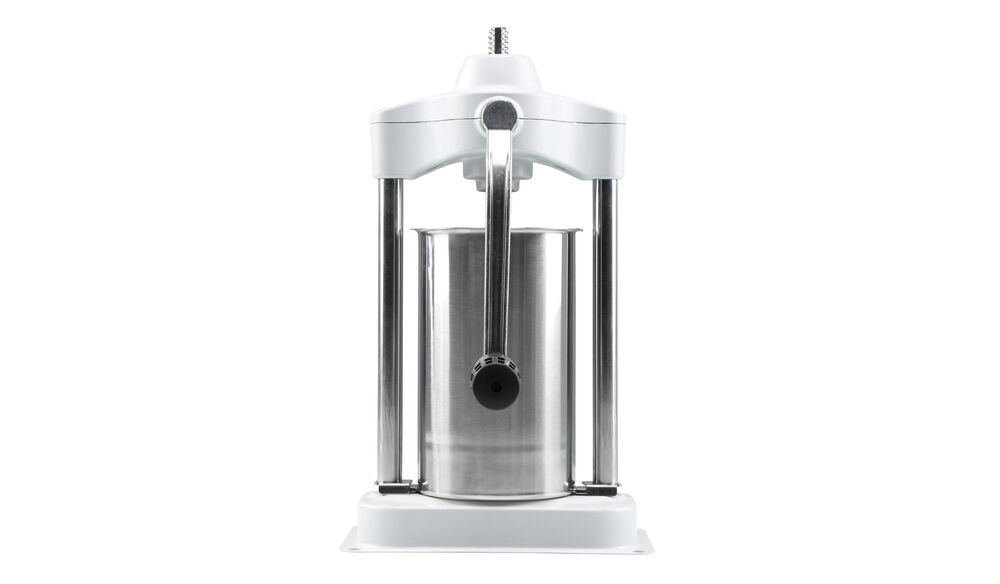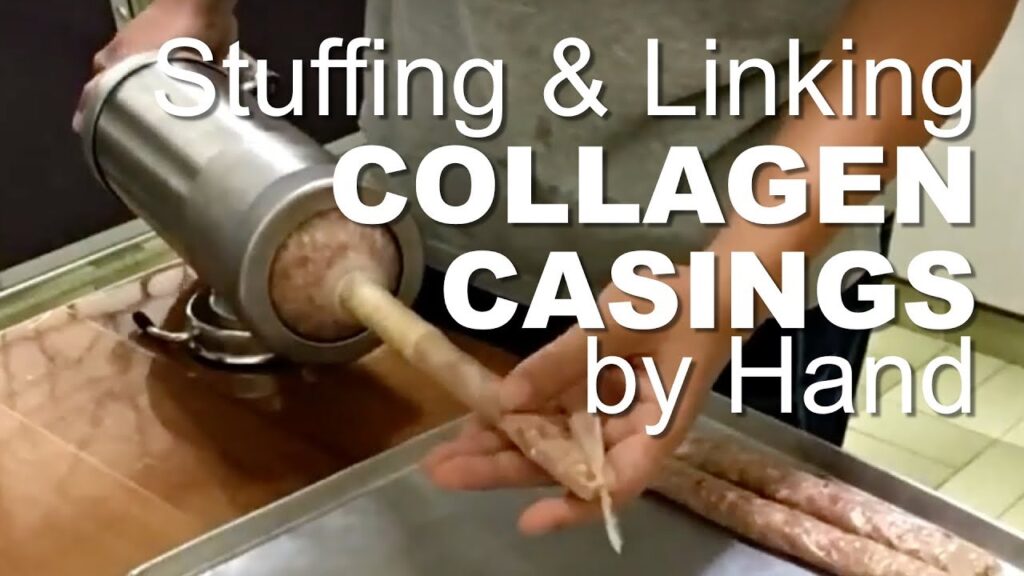The white stuff on the sausage is most likely just coagulated proteins and fat. It is a common occurrence when cooking sausages and is not harmful to consume.
However, if your sausage has a strong or unpleasant odor, it may be spoiled and should be thrown away. Cooked sausage that has gone bad often has a rotten smell, even if it was bought precooked. It is important to check for any signs of spoilage before consuming sausage.
Sausage is a popular food item consumed worldwide. It can be cooked in various ways and is a versatile ingredient in many dishes. However, sometimes white specks or a white film can appear on the sausage, leading to confusion and concern. We will delve deeper into what causes the white substance on sausages and whether it is safe to eat. We will also discuss how to tell if sausage is spoiled and when it’s time to throw it away.
The Mystery Behind White Coatings On Sausage
Welcome to the intriguing world of sausages, where the mystery behind the white coatings is about to unfold. Have you ever wondered about the white stuff on sausages? Let’s delve into this enigma and unravel the truth behind the white coatings on sausages.
Types Of White Substances Found On Sausages
When it comes to sausages, there are various types of white substances that can be found on them, each with its own unique characteristics. These may include:
- Salt crystals
- Mold
- Protein and fat mixture
- Encapsulated citric acid
- Penicillium fungus
Common Misconceptions About The White Coating
It’s important to address some common misconceptions about the white coating on sausages to gain a clearer understanding. Contrary to popular belief, the white coating on sausages is not always mold. In fact, it can be a combination of different substances such as salt crystals, protein and fat mixture, and even penicillium fungus. It’s essential to differentiate between these substances to ensure food safety and quality.

Credit: www.reddit.com
Edible Molds: Nature’s Contribution To Charcuterie
When it comes to the world of charcuterie, the presence of white mold on sausages is a common sight. This phenomenon is not a cause for concern, but rather a natural and beneficial occurrence. Edible molds, such as penicillium, play a crucial role in the preservation and flavor development of sausages.
Role Of Penicillium In Sausage Preservation
Penicillium is a type of edible mold that thrives on the surface of dry sausages, contributing to their distinct flavor profile. This mold plays a vital role in the aging process of sausages, as it helps to break down proteins and fats, resulting in the development of complex and desirable flavors. Additionally, penicillium creates a protective barrier on the sausage, preventing harmful bacteria from proliferating and aiding in the preservation of the meat.
Edible Mold Vs. Harmful Mold
It’s important to distinguish between edible molds, such as penicillium, and harmful molds that can pose health risks. Edible molds are intentionally introduced to the sausage during production and are carefully monitored to ensure they contribute positively to the aging and flavor development process. On the other hand, harmful molds can result from improper storage conditions and may produce mycotoxins, which can be detrimental to health if consumed.
Salt And Fat Crystals: A Sign Of Quality
When it comes to dry-cured sausages, you may have noticed a white powdery substance on the surface. But what exactly is that white stuff on the sausage? Well, it turns out that these crystals are actually a sign of quality. They are primarily made up of salt and fat, and their presence indicates that the sausage has undergone a carefully controlled drying process.
How Crystals Form On Dry-cured Sausages
The formation of crystals on dry-cured sausages occurs during the drying and aging process. As the sausage gradually loses moisture, the salt and fat within the meat begin to concentrate on the surface. Over time, these concentrated salt and fat molecules crystallize, creating the distinctive white powder you see.
Distinguishing Between Salt Crystals And Other Residues
It’s important to note that not all white residues on sausages are salt crystals. Sometimes, other substances like mold or bacteria can also appear as white patches. However, it’s relatively easy to distinguish between salt crystals and other residues.
Salt crystals are typically evenly distributed across the surface of the sausage and have a fine, powdery texture. On the other hand, mold or bacterial growth often appears as fuzzy or irregular patches. If you’re unsure, it’s best to consult a professional or trusted source to ensure the safety and quality of the sausage.
Now that you know the story behind the white stuff on dry-cured sausages, you can appreciate it as a positive indication of the sausage’s quality. The presence of these salt and fat crystals signifies that the sausage has been carefully crafted and properly aged, resulting in a flavor and texture that is truly exceptional.

Credit: www.reddit.com
Casing Conundrums: To Eat Or Not To Eat
When it comes to sausages, one question that often arises is whether to eat the white stuff on the casing or not. This white substance can be found on various types of sausages and can sometimes leave people puzzled. Let’s delve into the casing conundrums and explore the reasons behind this phenomenon.
Different Types Of Sausage Casings
Sausages come in different varieties, and each type may have a unique casing. The casing is the outer layer that encloses the meat mixture. Some common types of sausage casings include:
- Natural casings: Made from the intestines of animals, such as sheep, pigs, or cows.
- Artificial casings: Manufactured from materials like collagen, cellulose, or plastic.
These casings serve the purpose of holding the meat mixture together during the cooking process and can sometimes develop a white substance on their surface.
Cultural Practices Regarding Sausage Casings
Cultural practices regarding sausage casings can vary across different regions and cuisines. In some cultures, it is common to eat the sausage casing along with the meat, while in others, the casing is typically removed before consumption.
For example, in Bavaria, Germany, there is a traditional white sausage called Weisswurst. It is believed that eating an even number of white sausage links brings bad luck, but the main reason for not eating the skin is its chewy texture, which can affect the taste. On the other hand, sausages like Bratwurst are commonly consumed with their casing, as it adds flavor and texture to the overall eating experience.
It’s important to note that the white substance on the sausage casing is not mold or any harmful substance. It is a natural occurrence and can be attributed to various factors such as the curing process or the specific ingredients used in the sausage preparation.
In conclusion, whether to eat or not to eat the white stuff on the sausage casing is a matter of personal preference and cultural practices. If you enjoy the texture and flavor it adds, go ahead and give it a try. If not, feel free to remove the casing before consuming the sausage.
Coagulated Proteins: The Science Of Sausage
The white stuff on sausages is a mixture of coagulated proteins and fat, which is a natural occurrence during the cooking process. This phenomenon is similar to what happens when cooking pork chops or salmon. It is safe to consume and does not indicate spoilage.
Understanding The Cooking Process
Sausages are a popular food item that can be enjoyed in many ways, such as grilled, fried, or boiled. During the cooking process, coagulated proteins can form on the surface of the sausage, often appearing as a white substance. This can leave some people wondering if the sausage is still safe to eat.Identifying Safe Vs. Unsafe Protein Coagulation
While the appearance of coagulated proteins on sausages is normal, it’s important to know how to identify safe vs. unsafe protein coagulation. Safe coagulation occurs when the proteins denature and solidify on the surface of the sausage due to heat exposure. This is a natural and harmless process that occurs during cooking. Unsafe protein coagulation, on the other hand, can occur when the sausage is spoiled or contaminated with harmful bacteria. In this case, the coagulated proteins may appear slimy or have a different color or texture than normal. If you notice any of these signs, it’s best to discard the sausage to avoid the risk of foodborne illness. In conclusion, understanding the science of sausage and the cooking process can help you identify safe vs. unsafe protein coagulation. Always make sure to properly cook your sausages and discard any that show signs of spoilage or contamination.
Credit: www.reddit.com
Sausage Safety: Spotting Spoilage Signs
The white stuff on sausage can be a natural occurrence, often caused by salt, sugar, or tyrosine being pushed to the surface of the meat. It’s not mold, but a natural fungus called penicillium, similar to the mold found on cheese.
If the sausage has a strong, unpleasant odor, it may be spoiled and should be discarded.
How To Tell If Your Sausage Has Gone Bad
Sausages are a popular food item around the world, but they can spoil quickly if not stored properly. The first sign of spoilage is a strong or unpleasant odor, which is usually fish-like, acidic, or sour. If you detect this type of smell, it’s best to throw the sausage away. Another way to tell if your sausage has gone bad is to check for mold. White mold can grow on the surface of sausages, but it doesn’t necessarily mean the sausage is spoiled. You can remove the mold by wiping it off with a damp cloth and then drying the sausage. However, if the mold is accompanied by a foul odor or slimy texture, the sausage is likely spoiled and should be discarded.The Difference Between White Mold And Spoilage
White mold can be a common occurrence on sausages and doesn’t always indicate spoilage. It is usually caused by tyrosine, salt, or sugar rising to the surface of the sausage and forming crystals. These crystals can look like mold, but they are harmless and can be wiped away with a damp cloth. Spoilage, on the other hand, is when bacteria grow on the sausage and cause it to go bad. This can happen if the sausage is not stored properly or if it is past its expiration date. Spoilage can be detected by an off smell, slimy texture, or a change in color. If you suspect your sausage is spoiled, it’s best to throw it away to avoid any health risks. In conclusion, it’s important to know the signs of sausage spoilage to ensure you are consuming safe and healthy food. By following proper storage techniques and checking for signs of spoilage, you can enjoy your sausages without any worries.Flavor Enhancers: Tiny Additions With Big Impact
When it comes to processed sausages, there is often a white substance or powder-like coating on the surface that can raise questions. What exactly is this mysterious white stuff on the sausage? Well, fear not, as we delve into the world of flavor enhancers, we’ll uncover the secrets behind this phenomenon.
Encapsulated Citric Acid Explained
One common flavor enhancer found in processed sausages is encapsulated citric acid. Encapsulated citric acid is a product in which citric acid is encapsulated with partially hydrogenated vegetable oil. These encapsulated citric acid particles appear as tiny white balls on the surface of the sausage.
The role of encapsulated citric acid goes beyond adding a tangy flavor to the sausage. It also serves as a preservative, extending the shelf life of the product. Additionally, the encapsulation process allows for controlled release of citric acid during cooking, ensuring a consistent and evenly distributed tangy taste throughout the sausage.
The Role Of Flavor Additives In Processed Sausages
Flavor additives play a crucial role in processed sausages, enhancing their taste, texture, and overall appeal. These additives are carefully selected and added in precise quantities to achieve the desired flavor profile.
Aside from encapsulated citric acid, other common flavor additives in processed sausages include salt, sugar, and various spices and herbs. These ingredients work together to create a well-balanced and flavorful sausage that appeals to the taste buds.
It’s important to note that these flavor additives are regulated and approved by food safety authorities to ensure consumer safety. When used in appropriate amounts, they pose no harm and are essential in creating the delicious sausages we enjoy.
In conclusion, the white stuff on the sausage is often a result of encapsulated citric acid, a flavor enhancer and preservative. This tiny addition has a big impact on the taste and overall quality of processed sausages. So, the next time you come across that white powder-like coating, you can now appreciate the role it plays in enhancing your sausage-eating experience.
Sausage Storage And Maintenance
Proper storage techniques for sausages are crucial to maintain their longevity and quality. Whether you have purchased sausages from a store or made them at home, following the right storage practices will ensure that your sausages stay fresh and safe to eat for a longer period.
Proper Storage Techniques For Sausages
When it comes to storing sausages, it is essential to consider the temperature and environment. Here are some guidelines to help you store sausages properly:
- Refrigeration: Store fresh sausages in the refrigerator at a temperature below 40°F (4°C). This will help slow down the growth of bacteria and prevent spoilage.
- Freezing: If you want to extend the shelf life of your sausages, freezing is an excellent option. Before freezing, ensure that the sausages are wrapped tightly in airtight packaging to prevent freezer burn.
- Labeling: It’s a good practice to label your sausages with the date of storage. This will help you keep track of their freshness and consume them within a reasonable time frame.
- Separation: If you have different types of sausages, it’s advisable to store them separately to avoid cross-contamination of flavors and potential spoilage.
Longevity And Quality Retention Of Sausages
By following proper storage techniques, you can ensure the longevity and quality retention of your sausages. Here are a few key points to keep in mind:
- Extended Shelf Life: Storing sausages in the refrigerator can help keep them fresh for up to 3-4 days. Freezing sausages can extend their shelf life for several months.
- Safe Consumption: Proper storage practices minimize the risk of bacterial growth, ensuring that your sausages remain safe to eat. Always check for any signs of spoilage, such as off smells or discoloration, before consuming.
- Optimal Flavor: By storing sausages correctly, you can preserve their flavors and prevent them from becoming dry or losing their taste.
Remember, following these storage techniques will help you enjoy delicious sausages while maintaining their freshness and quality.
Frequently Asked Questions
How To Tell If Sausage Is Spoiled?
To tell if sausage is spoiled, check for a strong or unpleasant odor. If it smells fishy, acidic, sour, or rotten, throw it away. This applies to both raw and cooked sausage. Don’t eat sausages with white mold on them, as it can indicate spoilage.
What Is The White Stuff In Deer Sausage?
The white stuff in deer sausage is often salt, sugar, or tyrosine that has been pushed to the surface of the meat.
What Are The Little White Balls In Summer Sausage?
The little white balls in summer sausage are encapsulated citric acid, which is added during the manufacturing process. It is a product in which citric acid has been encapsulated with partially hydrogenated vegetable oil. It looks like tiny white balls about the size of a pinhead.
Conclusion
Understanding the white stuff on sausages is essential for ensuring food safety. The white substance could be mold, salt, or coagulated proteins, and it’s important to differentiate between harmless and spoiled sausages. Proper storage and cooking techniques are crucial for enjoying sausages safely.




